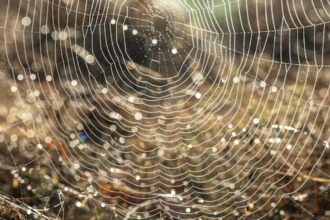Introduction to How Often To Water Jujube Tree Albuquer
Are you ready to cultivate a thriving jujube tree in Albuquerque? These charming trees, known for their sweet and nutritious fruit, can be a rewarding addition to your landscape. However, nurturing them requires more than just planting and hoping for the best. One of the most critical aspects of ensuring your jujube tree flourishes is understanding How Often To Water Jujube Tree Albuquer it. Watering may seem straightforward, but getting it right can make all the difference between a healthy tree laden with fruit and one that struggles under dry conditions or drowns from too much moisture. Let’s dive into everything you need to know about properly watering your jujube tree in Albuquerque!
Importance of Proper Watering for Jujube Trees
Proper watering is crucial for the health of jujube trees. These resilient trees thrive in various climates, but they still require specific care.
Watering affects growth, fruit production, and overall vitality. Insufficient water can stunt development and reduce yields. Conversely, too much moisture may lead to root rot or fungal diseases.
Understanding the tree’s needs helps you establish a consistent routine. Jujube trees prefer deep watering sessions rather than frequent light sprinklings. This method encourages strong root systems that are capable of accessing nutrients effectively.
Moreover, proper hydration enhances resilience against pests and environmental stressors. When adequately watered, these trees adapt more readily to temperature fluctuations and drought conditions.
Recognizing the importance of maintaining optimal moisture levels lays the foundation for successful cultivation of healthy jujube trees in your garden.
Factors that Affect Watering Frequency
Several factors can influence how often you need to water your jujube tree in Albuquerque. First, consider the climate. Albuquerque experiences hot summers and mild winters, which means higher evaporation rates during summer months.
Soil type plays a crucial role as well. Sandy soils drain quickly, requiring more frequent watering compared to clay or loamy soils that retain moisture better.
The age of your jujube tree also matters. Younger trees tend to have shallower root systems and may need more consistent moisture than established ones with deeper roots.
Additionally, rainfall patterns throughout the growing season can impact watering needs significantly. If an unexpected rain shower occurs, it might reduce your watering schedule temporarily.
Mulching around the base of the tree helps retain soil moisture and moderate temperature fluctuations; this could lead to less frequent watering sessions overall.
Signs of Under and Overwatering
Recognizing the signs of under and overwatering is crucial for your jujube tree’s health. When a tree is underwatered, its leaves may curl or become crispy. You might also notice stunted growth and premature leaf drop.
On the flip side, overwatering presents different symptoms. Yellowing leaves can indicate too much moisture in the soil. If you see mushy roots or a foul smell from the base of the trunk, your tree could be drowning.
Pay attention to how quickly water drains from your soil after watering sessions. Slow drainage often leads to root rot while fast-draining soils may leave your jujube thirsty.
Checking both visual cues and soil conditions will help ensure that you’re meeting your jujube tree’s watering needs effectively. This balance is key to maintaining vibrant foliage and healthy fruit production.
How Often Should You Water Your Jujube Tree in Albuquerque?
Watering a jujube tree in Albuquerque requires careful attention to the climate and soil conditions. Generally, during the growing season, you should aim to water deeply once every week or two. This allows the roots to establish well.
In hotter months, especially June through August, your frequency may need adjustment. A dry spell can prompt you to increase watering sessions as needed. Pay special attention if temperatures soar above 90°F; your tree will appreciate extra moisture.
When watering, focus on soaking the root zone thoroughly rather than just sprinkling the surface. This encourages deeper root growth and boosts drought resistance.
Be cautious with newly planted trees; they often require more frequent watering for their first year until fully established. Adjustments might be necessary based on rainfall and humidity levels throughout each season in Albuquerque’s unique desert environment.
Tips for Properly Watering Your Jujube Tree
Start by watering deeply and less frequently. This encourages the roots to grow deeper into the soil, which helps your jujube tree withstand drought conditions.
Timing matters too. Early morning is the best time for watering. It reduces evaporation and allows moisture to soak in before the heat of the day sets in.
Use mulch around the base of your tree. Organic materials like wood chips or straw can help retain soil moisture and regulate temperature.
Always check soil moisture before adding more water. Stick your finger about an inch into the dirt; if it feels dry, it’s time to water again.
Consider using a drip irrigation system for efficiency. This method delivers water directly to the root zone without wasteful runoff from traditional sprinklers.
Keep an eye on weather patterns! Adjust your watering schedule during rainy weeks or extreme heat spells as needed.
Conclusion: How Often To Water Jujube Tree Albuquer
Watering your jujube tree in Albuquerque requires a thoughtful approach. By understanding the specific needs of this unique plant and considering local climate conditions, you can ensure its health and productivity. Aim for consistent moisture without overwhelming the roots. Remember that each tree is different; factors like soil type, age, and weather will influence how often to water.
Monitoring your tree’s response to watering will guide you in adjusting your schedule as necessary. Observing signs of stress or excessive moisture can help you become more attuned to its needs over time. With proper care and attention, your jujube tree can thrive in Albuquerque’s distinct environment, providing delicious fruits for years to come.

















